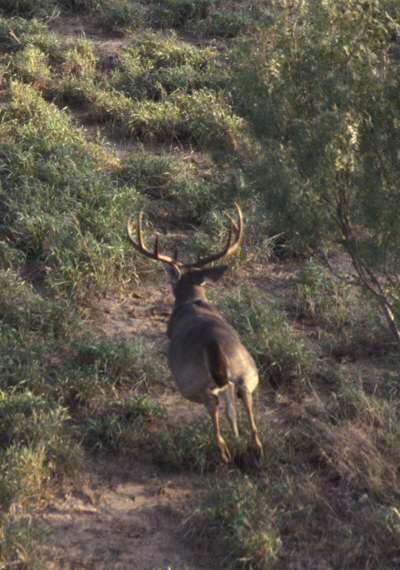by John Jefferson
I recently heard Larry Weishuhn, former TPWD wildlife biologist, nationally prominent hunter, and media personality, speaking on deer hunting. His excellent program is available on the www.austinwoodsandwaters.org website and on You Tube.

Three days after the program, a tragic helicopter crash occurred on the Black Gap Wildlife Management Area (WMA), taking the lives of the State Veterinarian and two TPWD wildlife staff members. They were performing an aerial bighorn sheep survey above the rugged 107,878-acre area adjacent to Big Bend National Park.
Weishuhn, himself, went down in a helicopter crash earlier. Actually, he’s crashed 13 times. Some caused minor damage to the chopper. One was hauled out in pieces. Weishuhn was hospitalized after that one, suffering severe back problems, a concussion, and cuts requiring numerous stitches to the back of his head. Some thought he was dead. He still doesn’t remember what happened.
Five friends have gone down in helicopters. One was shot down in Nam (James Caston) and two others crashed doing aerial deer surveys (Al Brothers and Larry). The other two occurred August 8. I didn’t know the third TPWD employee killed in that crash, Brandon White, who worked at Black Gap.
The two I knew were Dr. Bob Dittmar and Dewey Stockbridge. Dr. Bob, as everybody called him, was a veterinarian in Fredericksburg at the time we met. He later joined TPWD as the State Vet since he had vast experience with wildlife health issues. Dr. Bob and I met while instructing at the Texas Wildlife Assn./TPWD Buckskin Brigades. He and Dr. Dan McBride, of Burnet, performed deer necropsies for kids attending the weeklong camps. Most had never seen the inside of a dead deer. It was a hot afternoon of the first day of camp, and several students became a little pale. Dr. Dittmar unselfishly donated time for educating kids and adults.
The other friend in the recent crash was Dewey Stockbridge. Dewey guided me on a photo shoot for a magazine article about bighorn sheep hunting on Elephant Mountain. He knew it like his own backyard and seemed to know each ram by name. His knowledge was invaluable.
Some might recognize Stockbridge’s name. He guided two recent bighorn hunters that I’ve written about – Nyle Maxwell and bowhunter, Alan McGraw. Both sang his praises.
Dewey told me he liked working on Elephant Mountain but preferred the Black Gap. Ironically, that’s where the crash occurred.
On my first aerial photography assignment, I accompanied Weishuhn and our helicopter pilot over the 5,000-acre Pinto Valle Ranch in Webb County. I became hooked on it and flew other ranches afterwards. Another wildlife biologist cautioned me, saying, “Everybody goes down eventually.”
I had met Al Brothers before his crash and have hunted with him numerous times since. He was severely injured but fought back, refusing to abandon his passion for the Brush Country. He still hunts, driving his truck or four-wheeler anywhere he wants to go. And he continued performing aerial surveys for years.
Helicopters can be dangerous. But provide incomparable observations abilities.
JJ



